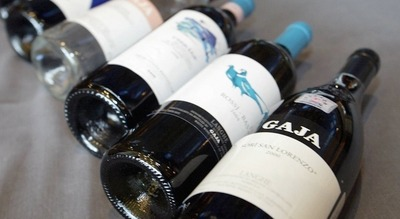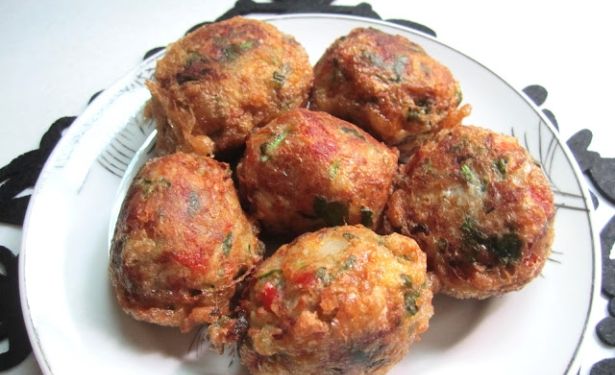IN Italy, you get the best of both worlds. If you’re into the traditional style of wines, you’ll find many a producer still making DOC wines from indigenous or local varieties, under strict rules, and using traditional vinification methods – wines aged in large oak casks rather than the small oak barrels.
If you’re more into the modern style of winemaking, the very same producer might well have something to please your palate. A table wine or country-regional classified wine IGT (Indicazione Geografica Tipica), made from non-indigenous or international grapes for starters (Cabernet Sauvignon, Chardonnay, Syrah) come under this catagory.
Some of theses wines might even contain a smidgen of indigenous varieties, making the blend a modern wine with a traditional touch, such as Supertuscan wines.
 Angelo Gaja uses a mix of traditional and modern techniques to produce wine fromgrapes grown in his own vineyards.
Angelo Gaja uses a mix of traditional and modern techniques to produce wine fromgrapes grown in his own vineyards.Head to the Piedmonte region of Italy and the distinctions of modern or traditional become even more acute. You’d think that all producers of Barolo and Barbaresco are traditional, since only the local grape, Nebbiolo, is used. In truth, producers are divided into modern and traditional here.
Take Bruno Giacosa, a “traditional” producer of some of the best wines in the region. Giacosa buys the grapes of other growers and makes very few concessions to modern winemaking practices. Grape juice and skin are allowed to macerate for a long period and wines are aged in 50- to 100-hectolitre botti (casks) for between one and four years.
The result is wines that taste intense in their youth but develop great depth and layers of velvety complexity with time.
Then there is the modernist, Angelo Gaja. Personally, I would rank Gaja and Giacosa as the best producers in the Piedmonte. But in terms of style, they couldn’t be more different.
Gaja incorporates modern techniques and only uses grapes from vineyards that he owns. He macerates his grapes and juice like the “traditionalists” but his ageing of wine is modern – in small French barriques. This is to “maintain the basic power and depth of Nebbiolo while polishing the wines to give them richer colour, fuller fruit, better balance and a more refined style.”
Certainly, Gaja wines are immediately drinkable – rich with a silky and fruity nature. In time, they continue to develop layers of complexity and depth, making them even more irresistible.
The traditional-modernist debate is also evident in many European countries, including Spain, where there is a lot of debate about the traditional Tempranillo grape. Which is the best way to make wine from it?
The traditional Rioja is a dry, red wine made from a blend of Tempranillo and other grapes from different sub regions. Typically, traditional Rioja begins in parts, each different, which bring unique elements that complete the wine.
In short, fresh, aromatic and bracing wines from one or two sub regions (Alavesa and Alta) are blended with warm rich wines of another region (Baja) to achieve balance and harmony. Before its release, Rioja is maturated lovingly in American oak casks, and also in the bottle.
The resulting wine is undoubtedly memorable with flavours of dusty red and black fruit, coconut and hints of leather, subtle nutty oxidative nuances with a savoury sweet finish.
The modern Rioja style is different in the sense that grapes are picked when the fruit begins to exhibit intense flavours. Strong extraction (long macerations) and other methods ensure the resulting wines are fruit forward. Wines are aged for a shorter period, usually in small French oak barrels.
The resulting wine is decidedly New Worldly in taste – creamy texture, juicy sweet red and black fruit. A toasty vanilla edge with hints of dried herbs comes from the small oak barrel treatment.
There are, of course, variations. Bodegas Roda is Rioja’s example of a “modern” wine producer. Its flagship, Cirsion, quickly took a place amongst Spain’s top 20 wines. Roda pays heed to the traditional approach to blending, with one caveat – only the best fruit from low-yielding, old vines are selected, often from various blocks of vineyards in Alta and Baja.
From the Alta region, Roda uses Tempranillo as well as a minor grape, Graciano; from Baja, it’s Garnacha and Tempranillo. And with a short ageing period in new small French oak, Roda wines emerge – voluptuous, velvety and modern-tasting, and appealing to many drinkers.
But Rioja’s traditionalists are not the least fazed. La Rioja Alta continues to consistently win awards.
Another traditionalist, Lopez de Heredia/VinaTondonia, still makes wines like they did in 1877, when the winery came into being. Wines are lovingly aged in big oak vats and exposed slowly to oxygen. The result: wines that are 30 to 40 years old but taste fresh with lively acids, with a depth of character underpinning a bouquet and flavours of stewed fruit, olives, hay, herbs, earth and more.
Traditional or modern, or a bit of both, it does not matter. All these producers incorporate whatever techniques that work best, in order to produce superlative wines in their respective regions and countries.






